Full-Length Transcriptome Sequencing-Based Analysis of Pinus sylvestris var. mongolica in Response to Sirex noctilio Venom
- PMID: 35447780
- PMCID: PMC9029201
- DOI: 10.3390/insects13040338
Full-Length Transcriptome Sequencing-Based Analysis of Pinus sylvestris var. mongolica in Response to Sirex noctilio Venom
Abstract
Sirex noctilio is a major international quarantine pest that recently emerged in northeast China to specifically invade conifers. During female oviposition, venom is injected into the host together with its symbiotic fungus to alter the normal Pinus physiology and weaken or even kill the tree. In China, the Mongolian pine (Pinus sylvestris var. mongolica), an important wind-proof and sand-fixing species, is the unique host of S. noctilio. To explore the interplay between S. noctilio venom and Mongolian pine, we performed a transcriptome comparative analysis of a 10-year-old Mongolian pine after wounding and inoculation with S. noctilio venom. The analysis was performed at 12 h, 24 h and 72 h. PacBio ISO-seq was used and integrated with RNA-seq to construct an accurate full-length transcriptomic database. We obtained 52,963 high-precision unigenes, consisting of 48,654 (91.86%) unigenes that were BLASTed to known sequences in the public database and 4309 unigenes without any annotation information, which were presumed to be new genes. The number of differentially expressed genes (DEGs) increased with the treatment time, and the DEGs were most abundant at 72 h. A total of 706 inoculation-specific DEGs (475 upregulated and 231 downregulated) and 387 wounding-specific DEGs (183 upregulated and 204 downregulated) were identified compared with the control. Under venom stress, we identified 6 DEGs associated with reactive oxygen species (ROS) and 20 resistance genes in Mongolian pine. Overall, 52 transcription factors (TFs) were found under venom stress, 45 of which belonged to the AP2/ERF TF family and were upregulated. A total of 13 genes related to the photosystem, 3 genes related photo-regulation, and 9 TFs were identified under wounding stress. In conclusion, several novel putative genes were found in Mongolian pine by PacBio ISO seq. Meanwhile, we also identified various genes that were resistant to S. noctilio venom, such as GAPDH, GPX, CAT, FL2, CERK1, and HSP83A, etc.
Keywords: Pinus sylvestris var. mongolica; Sirex noctilio; full-length transcriptome; venom; wounding.
Conflict of interest statement
The authors declare no potential conflicts of interest.
Figures
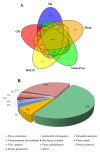
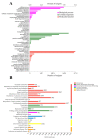

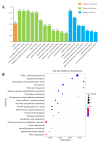
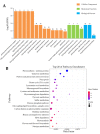
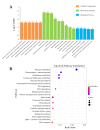
Similar articles
-
Genome Sequencing and Analysis of the Fungal Symbiont of Sirex noctilio, Amylostereum areolatum: Revealing the Biology of Fungus-Insect Mutualism.mSphere. 2020 May 13;5(3):e00301-20. doi: 10.1128/mSphere.00301-20. mSphere. 2020. PMID: 32404513 Free PMC article.
-
Proteomic analysis of the venom and venom sac of the woodwasp, Sirex noctilio - Towards understanding its biological impact.J Proteomics. 2016 Sep 2;146:195-206. doi: 10.1016/j.jprot.2016.07.002. Epub 2016 Jul 5. J Proteomics. 2016. PMID: 27389852
-
Effects of endophytic fungi diversity in different coniferous species on the colonization of Sirex noctilio (Hymenoptera: Siricidae).Sci Rep. 2019 Mar 25;9(1):5077. doi: 10.1038/s41598-019-41419-3. Sci Rep. 2019. PMID: 30911076 Free PMC article.
-
Suitability of eastern pines for oviposition and survival of Sirex noctilio F.PLoS One. 2017 Mar 23;12(3):e0174532. doi: 10.1371/journal.pone.0174532. eCollection 2017. PLoS One. 2017. PMID: 28334011 Free PMC article.
-
Biomarker genes highlight intraspecific and interspecific variations in the responses of Pinus taeda L. and Pinus radiata D. Don to Sirex noctilio F. acid gland secretions.Tree Physiol. 2012 Oct;32(10):1302-12. doi: 10.1093/treephys/tps091. Epub 2012 Oct 5. Tree Physiol. 2012. PMID: 23042767
Cited by
-
Mechanoecology and Chemoecology: Physical and Chemical Interactions between Insects and Plants.Insects. 2023 Jul 23;14(7):657. doi: 10.3390/insects14070657. Insects. 2023. PMID: 37504663 Free PMC article.
-
Different genotypes and species of symbiotic fungi mediate the behavioral response of invasive Sirex noctilio fabricius (Hymenoptera: Siricidae).Front Microbiol. 2024 Jul 11;15:1341646. doi: 10.3389/fmicb.2024.1341646. eCollection 2024. Front Microbiol. 2024. PMID: 39056012 Free PMC article.
References
-
- Zhu J.-J., Li F.-Q., Xu M.-L., Kang H.-Z., Wu X.-Y. The role of ectomycorrhizal fungi in alleviating pine decline in semiarid sandy soil of northern China: An experimental approach. Ann. For. Sci. 2008;65:304. doi: 10.1051/forest:2008007. - DOI
-
- Song L., Zhu J., Yan Q., Li M., Yu G. Comparison of intrinsic water use efficiency between different aged Pinus sylvestris var. mongolica wide windbreaks in semiarid sandy land of northern China. Agrofor. Syst. 2015;89:477–489. doi: 10.1007/s10457-014-9784-4. - DOI
-
- Jiao-Jun Z., Zhi-Ping F., De-Hui Z., Feng-Qi J., Takeshi M. Comparison of stand structure and growth between artificial and natural forests of Pinus sylvestiris var. mongolica on sandy land. J. For. Res. 2003;14:103–111. doi: 10.1007/bf02856774. - DOI
-
- Li D., Shi J., Lu M., Ren L., Zhen C., Luo Y. Detection and Identification of the Invasive Sirex noctilio (Hymenoptera: Siricidae) Fungal Symbiont, Amylostereum areolatum (Russulales: Amylostereacea), in China and the Stimulating Effect of Insect Venom on Laccase Production by A. areolatum YQL03. J. Econ. Entomol. 2015;108:1136–1147. doi: 10.1093/jee/tov072. - DOI - PubMed
LinkOut - more resources
Full Text Sources
Research Materials
Miscellaneous

